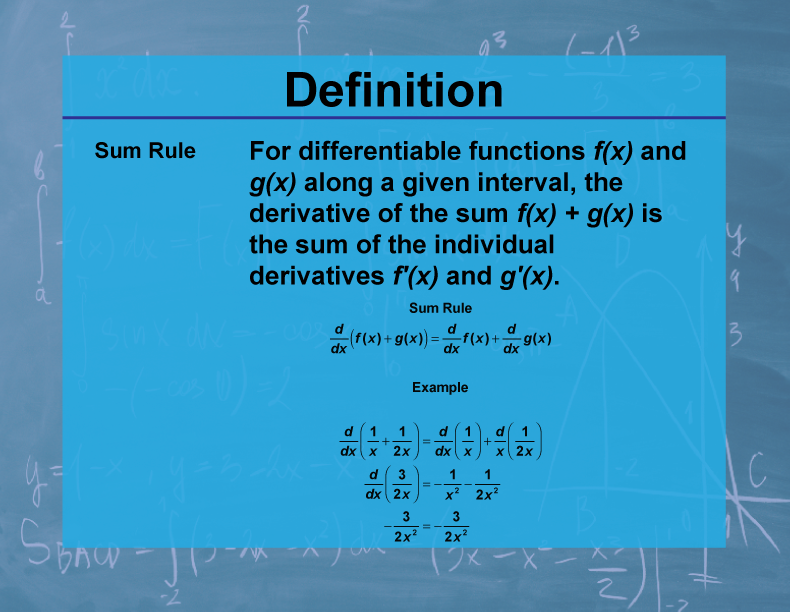
Display Title
Definition--Calculus Topics--Sum Rule
Display Title
Definition--Calculus Topics--Sum Rule

Topic
Calculus
Definition
The Sum Rule for derivatives states that the derivative of a sum of functions is equal to the sum of their derivatives. Mathematically, if f(x) and g(x) are differentiable functions, then d/dx[f(x) + g(x)] = f'(x) + g'(x).
Description
The Sum Rule is a fundamental principle in calculus that allows for the differentiation of complex functions by breaking them down into simpler parts. It's one of the basic rules of differentiation, along with the Product Rule and Chain Rule. This rule is crucial for efficiently calculating derivatives of polynomial functions and more complex combinations of functions.
In mathematics education, the Sum Rule helps students understand the linearity of the differentiation operation. It reinforces the idea that complex problems can often be solved by breaking them down into simpler parts. This rule is typically one of the first differentiation rules taught, providing a foundation for more advanced techniques and preparing students for the concept of linearity in higher mathematics.
Teacher's Script: "Let's consider the function f(x) = x2 + sin(x) + 3x. To find its derivative, we can apply the Sum Rule. We differentiate each term separately and then add the results. So, f'(x) = 2x + cos(x) + 3. How does this compare to differentiating the function as a whole? Can you think of a real-world scenario where we might use a function like this, perhaps in physics or engineering? The Sum Rule allows us to handle complex functions by breaking them down into manageable pieces."
For a complete collection of terms related to Calculus click on this link: Calculus Vocabulary Collection.
| Common Core Standards | CCSS.MATH.CONTENT.HSF.IF.C.7, CCSS.MATH.CONTENT.HSF.BF.A.1.C |
|---|---|
| Grade Range | 11 - 12 |
| Curriculum Nodes |
Algebra • Advanced Topics in Algebra • Calculus Vocabulary |
| Copyright Year | 2023 |
| Keywords | calculus concepts, limits, derivatives, integrals, composite functions |